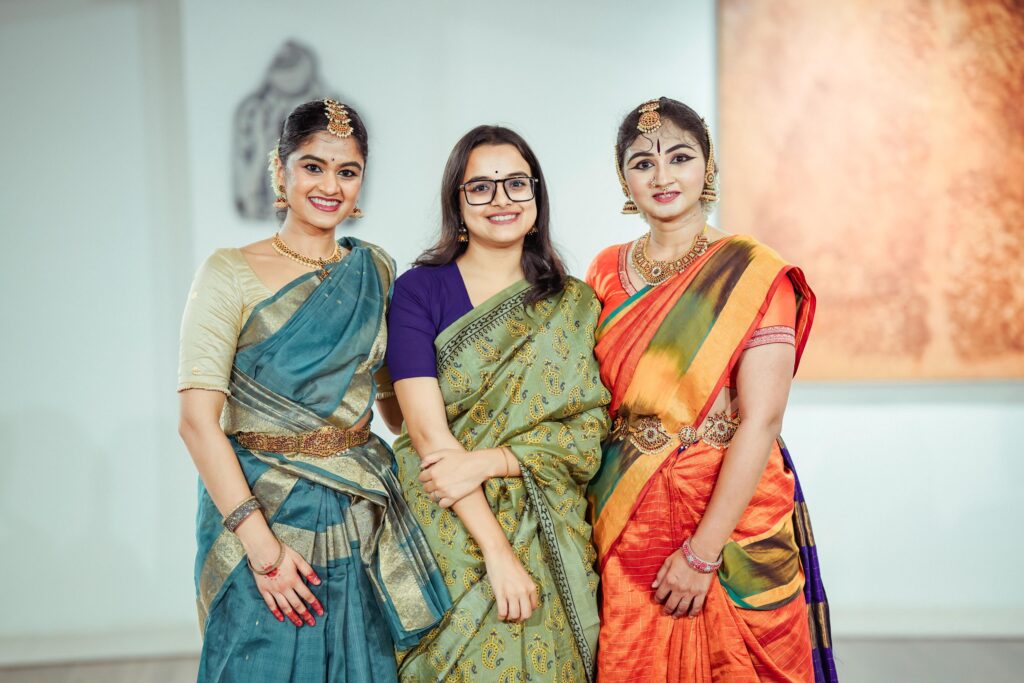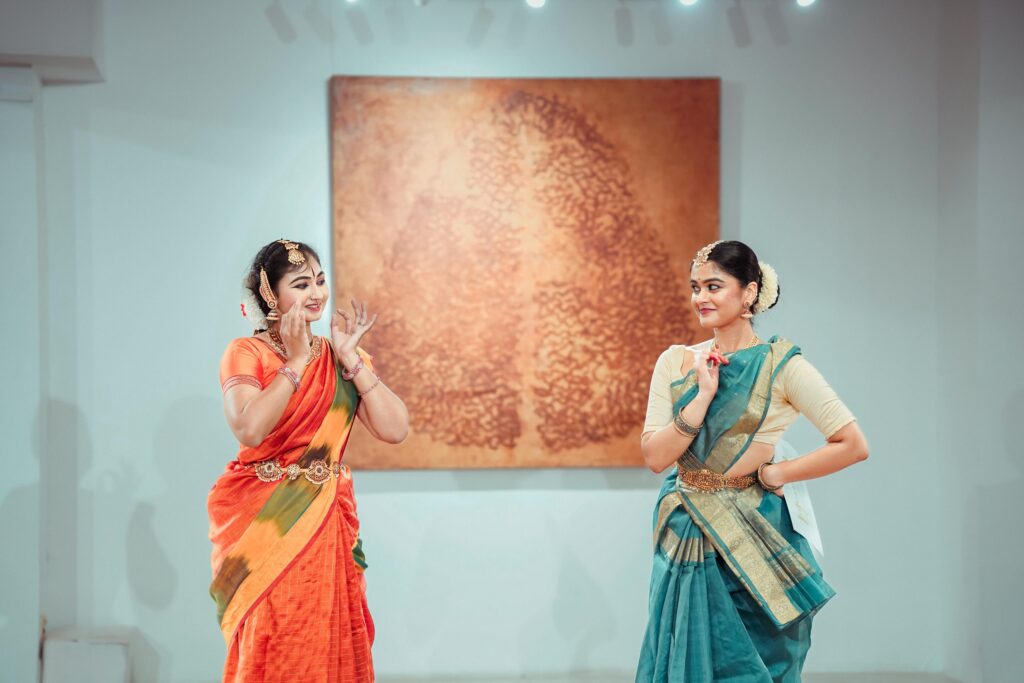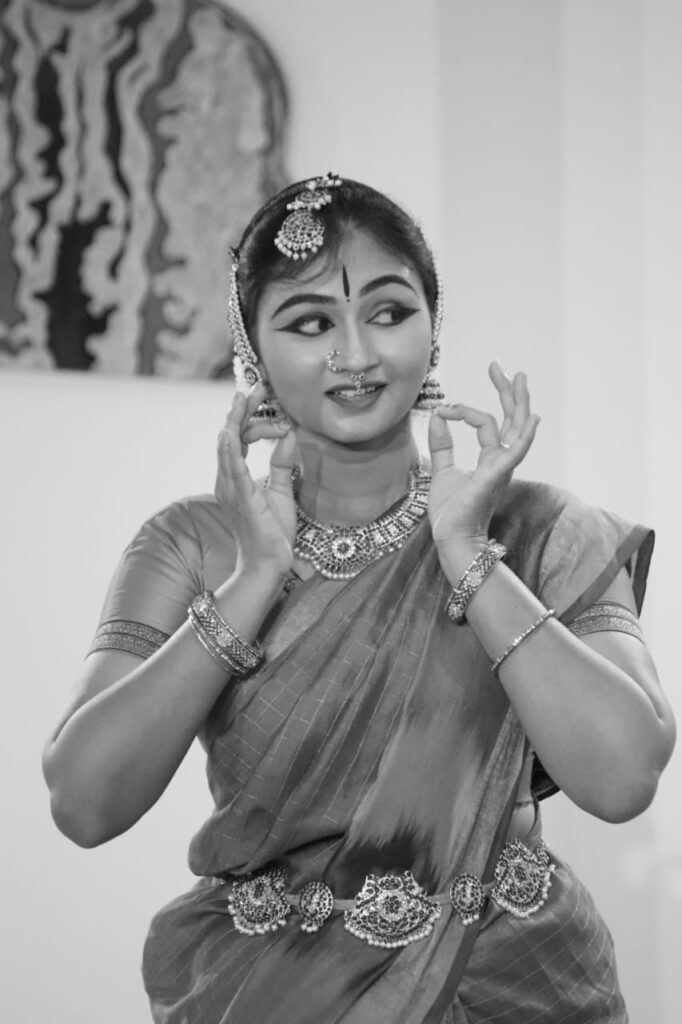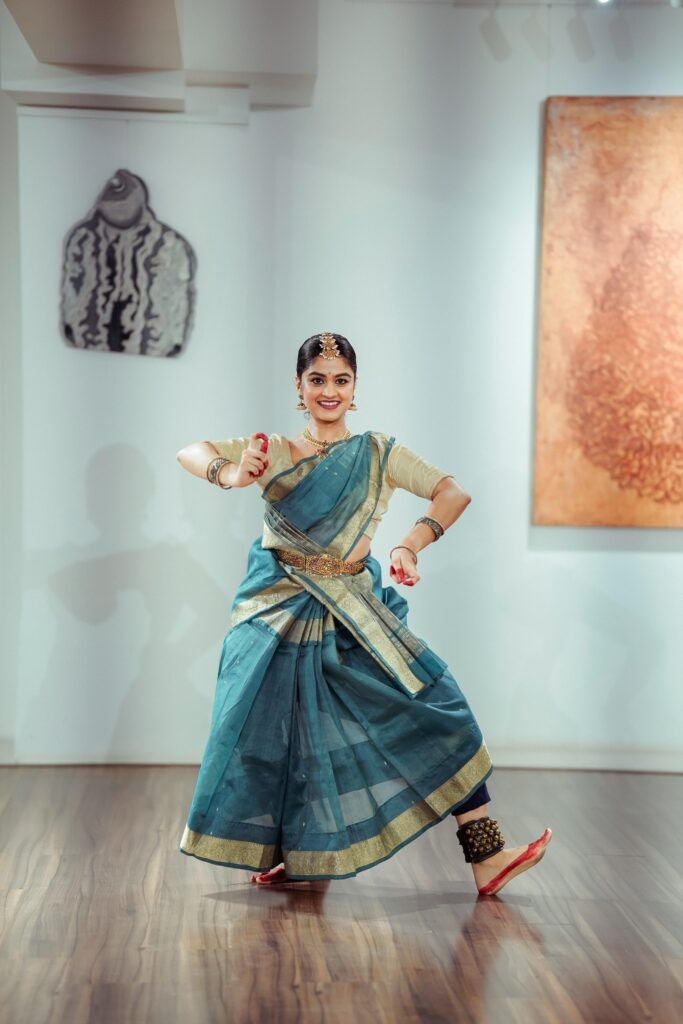

Kuchipudi dancers Medha Srigiri & Vyshnavi Korlakunta presented Kuchipudi Carousel at Dhi Art Studios, Ameerpet, showcasing to the audience present, a couple of various types of performances and pieces that exist in Kuchipudi.
Speaking exclusively to Natyahasini, Kuchipudi dancer, Vyshnavi Korlakunta says, “Kuchipudi, generally is presented either in a solo format or in a theatrical style in performances, this time we wanted to show both styles together in a single performance, hence we chose the pieces from both the solo repertoire of Kuchipudi and few excerpts from the theatrical style of Kuchipudi.”
She says that they chose the pieces to show how Kuchipudi evolved from a theatrical style to a solo format taking few pieces from Yakshaganams, Kalapams, Sabdams, Padams, Tarangam and Kriti format so that the audience can understand how literature, music and movements formats evolved over time in Kuchipudi. “In the Bhamakalapam excerpts, Madhavi’s dialouges were in English, while Satyabhama speaks in Telugu, this is for the non-Telugus to understand the conversation and enjoy the humour, while the essence and beauty of Telugu is retained in Satyabhama’s voice, making it a bi-lingual conversation,” says Vyshnavi.
Vyshnavi demonstrated pieces from the dance drama repertoire as her training is more focused on that, while Medha having learned Dr. Vempati Chinna Satyam’s style of Kuchipudi performed pieces choreographed for the solo repertoire.
Medha Srigiri began the evening’s performance with Nāndi Stuti verses from the Natyashastra that are part of the traditional Poorvaranga Vidhi, the pre-performance ritual, invoking prosperity for the country, rulers, scholars, patrons of art and artistes. This was followed up with a Purandara Dasa Keertana, Gajavadhana Beduve, set to Hamsadvani Raagam and Adi Tālam and choreographed by Guru Dr. Vempati Chinna Satyam. In this Ganesha invocatory piece, the dancer beautifully expressed her heartfelt desire to meet Lord Purandara Vittala seeking the help of the elephant-headed God.
Vyshnavi made her entry with ‘Hiranya Kasyapa Daruvu’ taken from the ‘Prahlada Natakam’, the very first Yakshganam in Kuchipudi. This Daruvu shows Hiranyakasyapa’s entry to his court, his patronage to the court dancers & that he is always ready to fight against the Devatas, especially Hari. Set to Saveri Ragam and Adi Talam, Vyshnavi portrayed the Deroddhata Nayaka exhibiting virtues like strength, ego, arrogance and one who nurtures enmity with ease.
Dancers Vyshnavi and Medha took centre-stage with a small excerpt from Saint poet Siddhendra Yogi’s Bhamakalapam, which occupies the pride position in the line of Bhagavata stories. Excerpts from Bhamakalapam with Madhyamavathi, Bhairavi ragas… opens with Satyabhama calling her Sakhi Madhavi asking the whereabouts of her husband who left her abode a while ago. They get into a humorous dialogue regarding the identity of Satyabhama’s husband. Subsequently, Satyabhama declares to Madhavi her pain at the estrangement of her beloved Lord Krishna. Both the dancers enacted their parts magnificently.
Composer Melatturu Kasinadhayya’s ‘Ramayana Shabdam’ set to Mohana Raagam and choreographed by Guru Dr. Vempati Chinna Satyam, talks about the praise of Lord Ram, Medha exhibits Konagulu Nritta, where the dancer links her toes together and dances leaving the audience in awe.
Medha performs to an excerpt from Govardhanagiridara Tarangam from the Krishna Leela Tarangini, a text by Narayana Theertha Kavi, set to Darbaari Kaanada Raagam, Triputa Talam and choreographed by Guru Dr. Vempati Chinna Satyam. In this, Medha shows her prowess dancing on the rim of the dance plate, which is a pure nritta section, and primary jathis.
Vyshnavi returns with ‘Atthavarooriki Amperu Mavaaru’, a Muvvagopala Padam attributed to Kshetrayya, highlighting the anguish of a teenage girl who is being sent to her in-law’s place, bidding farewell to Krishna, to whom she has grown fonder in the meantime.


The evening’s last performance was by Vyshnavi to a composition of Swami Dayananda Saraswati, ‘Bho Sambho’, in Revathi raga and Adi tala, choreographed by Dr. Kaja Venkata Subrahmanyam, which describes the philosophy of Shiva, his qualities, the formless ‘Parabrahma Tatva’ and progressing to the dancing Shiva, the Tandava Priya. Vyshnavi enacts the Gangavathanam scene of how River Ganga was adorned in the matted locks of Shiva. The choreography also included the Ravana Garvabhangam and the Rudra Veena episodes, wherein Natya, Nritya and Nritta have been incorporated together beautifully in the Kritis.
Photo Credits:
Black & White – Aravind Sripathi
Colour – Kalyan Krishna
